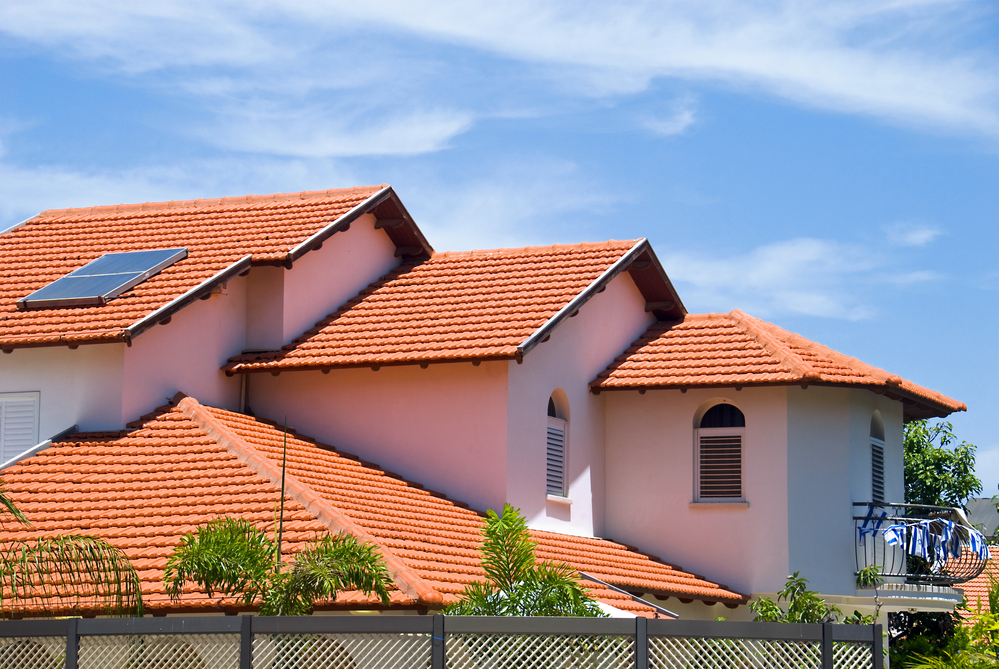We may earn revenue from the products available on this page and participate in affiliate programs. Learn More ›
Q: We just had a new roof installed on our home. A neighbor told us a horror story about a series of leaks and breaches they had in their own roof and suggested that we get a home warranty to protect the roof. I thought roofing already had a warranty. Does a home warranty cover roof leaks and replacement?
A: While you’re correct that shingles carry a warranty (which is why you may have heard the term “30-year roof”), that warranty only covers defects in the actual shingles or roofing material. Unless you can prove that the shingles or shakes on your roof are defective, that warranty isn’t going to help you much. Your roofing contractor should have specified their own warranty in your contract on the workmanship of the roof—most likely covering you for 1 to 2 years. After that, you’re on the hook for material and labor costs for roof leaks.
What does a home warranty cover? A home warranty is essentially a service contract that partially or fully covers repairs to major home systems, and a roof certainly qualifies as a major system. However, coverage varies based on the individual home warranty policy. Some policies include roof coverage as a standard system, while other companies offer this coverage as an add-on service, so you’ll need to choose the policy carefully to make sure it meets your needs.
Home warranty purchases work similarly to insurance purchases. You’ll pay an up-front cost, either monthly or annually, for the coverage you choose. This coverage will include either the systems in your home (HVAC, electrical, plumbing, and sometimes the water heater), the appliances in your home (usually built-in microwaves, washers, dryers, and large kitchen appliances), or both. Roof leak coverage is not usually available as a stand-alone purchase, so you’ll need to make decisions about what you’d like to have covered, and the cost will adjust accordingly. In addition to the premium, you’ll have a set service call fee, so when a contractor needs to visit your home to initiate a repair, you’ll pay a flat fee similar to an insurance copay. The amount of the service charge is built into the premium: If reducing the service charge is important to you, you’ll likely pay a higher premium, but if you’d rather pay less for the policy and choose a higher service fee in the event that you need to file a service request, that is usually an option as well.
If your roof is brand new, you probably don’t need a home warranty to cover it—yet. Because warranties cover age-related leaks and those that develop from normal wear and tear, your new roof probably won’t experience those for a few years.
It’s important to separate the age-related repairs that a home warranty covers and the accident-related coverage that homeowners insurance handles. If a branch comes crashing through the new roof during a storm, that incident will be covered by homeowners insurance, not a warranty. So if you’re worried about that kind of repair, check the coverage provided by your homeowners insurance and make sure you are meeting all the conditions necessary to file damage claims. In a year or two, when the workmanship guarantee from your roofer has expired, a home warranty will combine with your homeowners insurance to provide fairly comprehensive coverage from roof leaks.
It is not common for home warranty companies to cover roof replacement, but they may cover repairs.
This is an important distinction to understand: A home warranty doesn’t automatically replace something that’s broken, so despite the fact that you’re angry about your new roof leaking and want the whole thing replaced, your home warranty isn’t going to just replace the whole roof so you can start again. The warranty will allow the leak to be fixed. This is different from the way that home warranties cover other appliances and systems: In most policies, if a system or appliance can’t be repaired, it will be replaced, but roof coverage is limited to leaks and specifically excludes replacement.
While it’s possible that you may find a policy that includes complete roof replacement, that would be extremely unusual, and you would want to read that policy very, very closely to check for exclusions or reasons the warranty company might use to deny coverage. Some home warranty companies do partially contribute to replacement by assessing the maximum they would pay for the most egregious leak and contributing that amount toward the replacement, but the rest of the replacement cost will come out of your pocket.
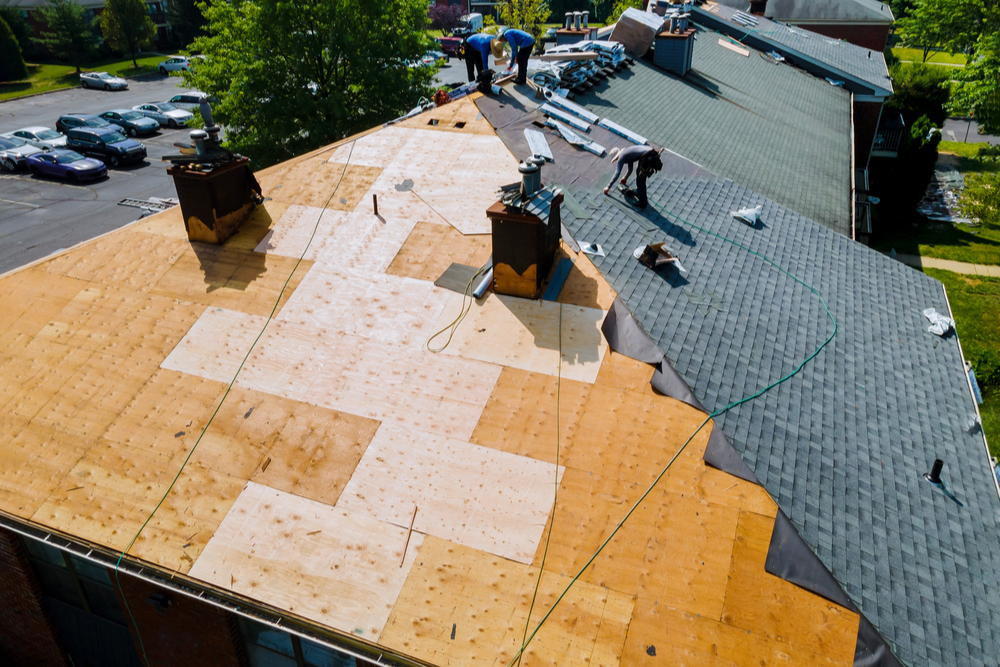
So what do home warranties cover? The true benefit of home warranty roof coverage is the repair coverage; the idea is that you’ll be less hesitant to call a roofer for a repair at the first sign of a leak—when leaks are most easily fixed—if you know that your cost will be covered.
If home warranty policies do provide roof coverage, it’s likely to be an add-on.
When you choose a home warranty policy, you’ll see a list of the systems and appliances that the warranty covers. Often these systems are arranged into packages at different price points to help homeowners select the level of coverage they prefer. Because roof repair and replacement is expensive for the warranty company, lower-priced packages may not include roof coverage at all, or the warranty company may make the coverage available as an add-on for an extra cost. Higher-priced packages may include the roof coverage as a standard part of the package, but you’ll want to look closely at the policy to make sure the roof is listed as covered.
Home warranties with roof coverage are more likely to cover roof repair costs due to leaks.
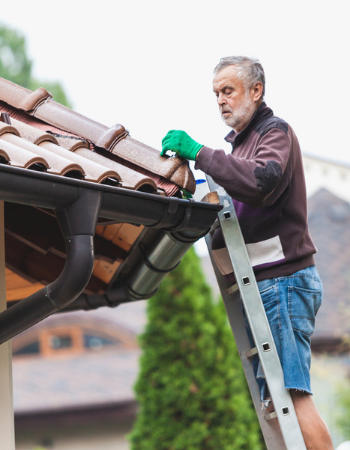
Home warranties are aimed at repairing systems and appliances that have started to fail as a result of age or normal wear and tear. Roofs are subject to the elements: Baking in the hot sun, freezing under drifts of snow, and being pelted with rain from all angles make even the toughest roofs vulnerable to tears and leaks. Sometimes the leaks can take a while to make themselves known to you—water can travel some distance in your walls before you see the spot on the ceiling or smell the damp, musty scent in your attic. Therefore, it’s critical to call a roofer for help at the first sign of a leak because the water may have been inside for some time.
Unfortunately, unless there’s a flood of water pouring in the house every time it rains, many homeowners put off calling in help because they’re (rightfully) intimidated by the potentially huge cost of repair or of being told they need a roof replacement. Delaying a repair just gives the leak time to get bigger and more destructive. The best home warranty companies know this and want their customers to call for service as soon as possible to keep the repairs smaller and more cost-effective, so what your coverage will likely include is a complete and competent assessment of the leak and an appropriate repair.
However, not all kinds of roof leak repairs are covered. Read the fine print to know what situations are not covered by the home warranty.
As with any warranty, there are limits and exclusions to what is covered by the policy. Home warranties usually only cover roofs that are over occupied parts of the home, so roofs above patios and porches are normally excluded. Some companies limit the type of roofs they’ll cover; metal roofs and flat tar and gravel roofs are examples of roofs that are often excluded from coverage. In addition, leaks at certain parts of a roof aren’t covered: Flashing failures, areas around skylights and windows, areas affected by solar or satellite components, and chimneys and vent stacks are frequently not covered by the warranty policy. Finally, leaks that are a result of damage, such as shingles torn or lost after a branch crashes into the roof, typically do not fall under a home warranty policy; because they result from damage and not wear and tear, those claims fall under your homeowners insurance policy.
The damage caused by the roof leak will not be covered by the home warranty policy.
Unfortunately, a roof leak isn’t a simple affair because it lets water into your home every time it rains. Water is insidious: It will find a way to infiltrate corners of your home where you can’t see or sense it until major damage has occurred or mold has grown to the point that you find the leak by following your nose. If this happens, you’ll want to immediately call the home warranty company to get the leak repaired before it can cause more damage.
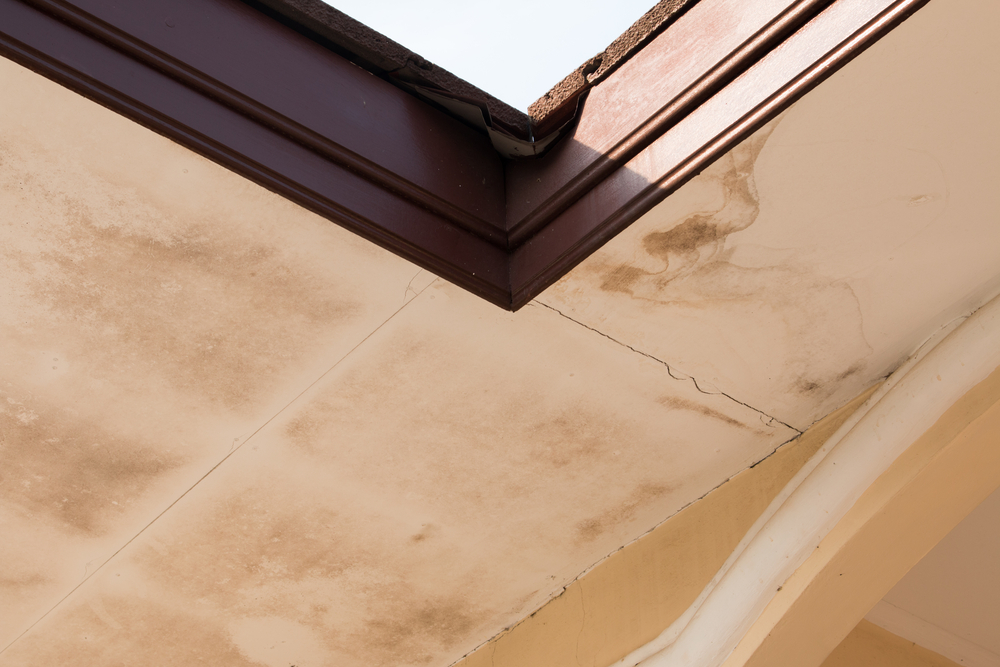
However, because the home warranty covers wear and tear but not damage, the mold abatement, damaged ceilings, and waterlogged floorboards that result from the leak are not part of the coverage. Most often a homeowners insurance policy will take care of the damage (but won’t cover the leak repair).
This distinction applies to all systems that home warranties cover: Does home warranty cover plumbing? Yes, but only the repair to the pipes and the system itself. Repairing the damage caused by the plumbing problem is covered by homeowners insurance. Does home warranty cover a water heater? The warranty will cover replacement of the water heater itself, but the resulting carpet and wall damage from the flood is between you and your homeowners insurance. Roof coverage is the same idea, so a warranty and insurance work together to provide complete coverage of each entire incident to restore your home to its former condition.
“Eco roofs” with live plants and vegetation are not covered, as these roofs require professionals who have special skills and equipment.
Eco roofs are trending in many areas right now, and with good reason: They take advantage of the sun and an area that would otherwise be empty to grow plants and vegetables, cleaning the air and offering extra gardening space. Installing an eco roof involves filling a flat-roofed area with soil and a growing medium, then planting live plants and vegetation in an otherwise unused space.
Unfortunately, eco roofs also trap moisture that’s necessary for the plants to grow, and this type of roof is quite heavy. Both of these factors mean the materials supporting an eco roof must meet certain specifications, and any repairs must be handled by specialized contractors who are in short supply. As a result, home warranty coverage does not include eco roofs.
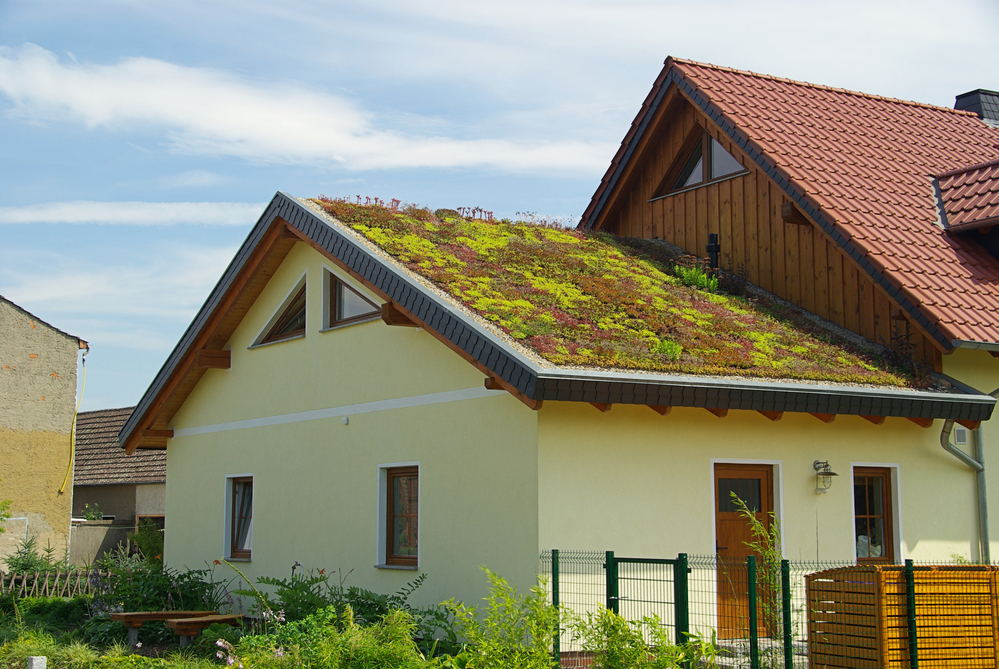
There are ways to prevent roof damage, but when it occurs, a home warranty with a roof repair policy addition can prevent you from paying full price.
Homeowners know that roof repair can be expensive; especially when purchasing a home, some of the most important questions buyers ask are about the age and condition of the roof. For this reason, many real estate agents advise sellers to include a 1-year home warranty to their potential buyers to put their minds at ease. Even for established homeowners, the question of “what does home warranty cover?” is reasonable, because as roofs age they’ll be more prone to leaks resulting from wear and tear, so existing homeowners may want to consider buying a home warranty to guard against age-related repairs.
Caring for your roof goes a long way toward preventing leaks and damage. Occasional cleaning by a professional, especially if your roof is shaded and prone to developing moss or algae, will keep its defenses strong. Avoiding power washers, especially on a high setting aimed at the underside of the shingles, will keep the water barriers in place and prevent damage to the shingles themselves.
If you live in a cold climate, it’s especially important to keep your gutters clean and clear to prevent ice dams from building up in the winter. Ice dams will often invalidate the homeowners insurance coverage of the roof, and because they’re a result of weather, their damage will not be covered by a home warranty.
Finally, it’s important to make sure that only licensed, qualified professionals work on your roof for any repairs. This includes chimney and HVAC work that may involve moving or cutting into the roof. Cleaning the gutters can be a DIY job if your home is one story (or you’re brave and secure on a ladder), but don’t try to patch a shingle or fill a hole yourself, because it could cost you in the long run by voiding your warranty and potentially any coverage your homeowners insurance may have provided.
The best way to prevent leaks from creating widespread damage to the larger roof is to seek repair as soon as a leak is discovered. Because the cost of roof repair can be intimidating, many homeowners delay calling for help until it’s too late. A home warranty that includes roof repair, either as part of a package or as an additional line item, can cover a significant portion of the repair costs and ultimately save you the out-of-pocket cost of a full roof replacement.

